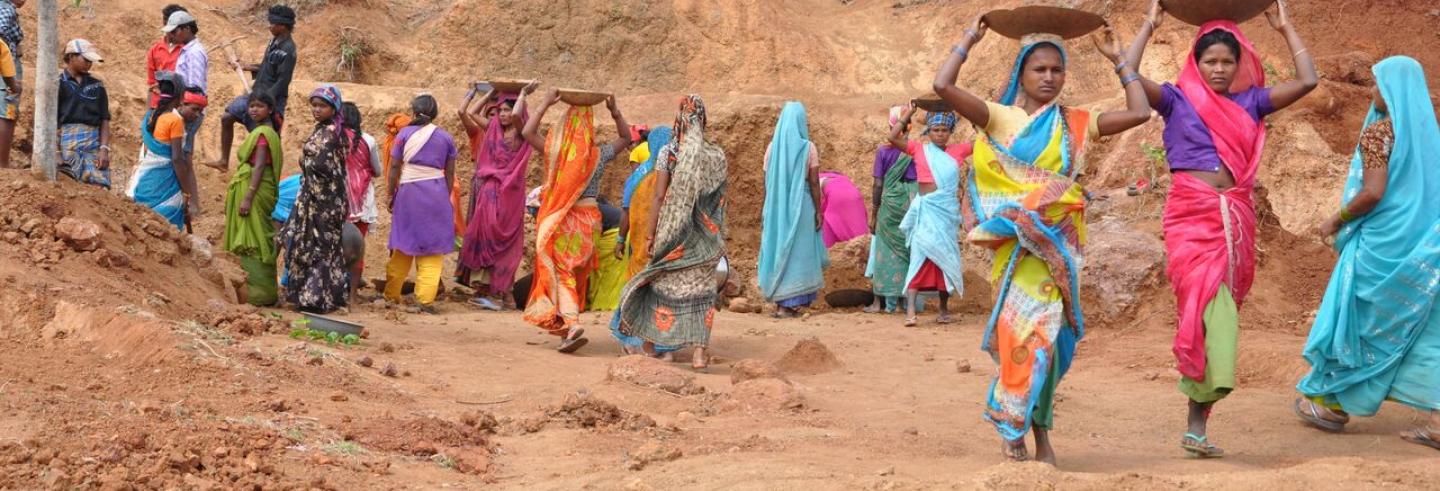In India, social security schemes have played a pivotal role in altering the landscape of rural welfare. Among these, the National Rural Employment Guarantee Act (NREGA) holds a distinctive place. Known formally as the Mahatma Gandhi National Rural Employment Guarantee Act, this scheme aims to enhance the livelihood security of people in rural areas by guaranteeing 100 days of wage employment in a financial year to a rural household whose adult members volunteer to do unskilled manual work.
The Pillars of NREGA
The primary objective of NREGA is to provide job security by creating durable assets and opportunities for wage employment. Key features of NREGA include:
- Employment Guarantee: As per the scheme, every rural household looking for work is entitled to at least 100 days of wage employment annually.
- Unskilled Manual Work: The work provided is unskilled manual labor, primarily focusing on activities like water conservation, drought-proofing, and land development.
- Timely Payment: NREGA stipulates that wages should be paid within 15 days of work done. Currently, the average wage under NREGA stands at ₹209 per day.
Financial Impact and Disbursements
The budget allocation for NREGA has seen a continuous rise. The government budgeted ₹73,000 crores for the NREGA scheme. This allocation reflects the pressing requirement for social safety nets amid economic uncertainties.
A Closer Look at NREGA’s Efficacy
Despite its commendable aims, critiques of NREGA often point to the artificial creation of work, delays in payments, and underutilization of the earmarked funds. However, proponents argue that while there may be operational inefficiencies, the benefits substantially outweigh the costs, primarily through rural asset creation and income support.
PMMVY: A Complementary Scheme
While NREGA aims to enhance employment opportunities, the Pradhan Mantri Matru Vandana Yojana (PMMVY) focuses on social support for maternity and child care. PMMVY is a maternity benefit program designed to provide a cash incentive of ₹5,000 in three instalments to pregnant women and lactating mothers.
By delving into various dimensions of social security, such as employment with NREGA and maternity benefits with PMMVY, the government ensures a more holistic upliftment of rural India.
Calculated Benefits
Let’s assume an average rural household avails the full benefit of the NREGA scheme:
– Daily wage: ₹209
– Employment days: 100
– Total income from NREGA: ₹209 x 100 = ₹20,900 per year
This income, albeit modest, serves as a crucial financial buffer for many rural families, especially during agricultural off-seasons or economic downturns. When combined with the benefits of PMMVY, such as the ₹5,000 cash incentive, the combined support from both schemes amounts to:
– Total annual benefit: ₹20,900 (NREGA) + ₹5,000 (PMMVY) = ₹25,900
The Role of NREGA in the Rural Economy
NREGA’s impact on the rural economy extends beyond just wage employment. Its focus on infrastructure, like water conservation and road development, directly contributes to the productivity and growth of rural areas.
In Conclusion
NREGA, complemented by initiatives like PMMVY, underscores the commitment to enhancing socioeconomic conditions in rural India. The efficacy of such programs lies in their diligent implementation and continuous monitoring to meet the objectives of equitable development.
Summary
The National Rural Employment Guarantee Act (NREGA) stands as a critical social security measure, aimed at providing 100 days of guaranteed wage employment to rural households in India. With an average wage of ₹209 per day, NREGA offers financial stability and contributes to rural infrastructure through unskilled manual labor. Despite its operational complexities, NREGA’s yearly budget allocation, which was ₹73,000 crores, highlights its significance. Complementarily, the Pradhan Mantri Matru Vandana Yojana (PMMVY) provides maternity benefits, ensuring broader social support. Together, these schemes extend substantial economic benefits, amounting to approximately ₹25,900 annually for beneficiary households. The article underpins informed decision-making and suggests that any investment in the Indian financial market should be carefully considered, weighing all potential risks and benefits.
Disclaimer:
Please note that the above analysis is for informational purposes only, and it is crucial for potential investors to thoroughly evaluate the pros and cons before engaging in the Indian financial markets.

